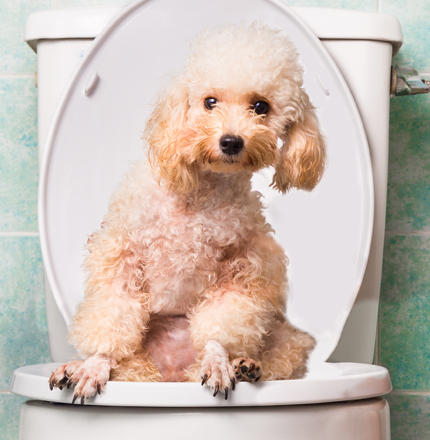What You Need to Avoid Flushing Animal Waste Down the Toilet
What You Need to Avoid Flushing Animal Waste Down the Toilet
Blog Article
Were you hunting for help and advice about 4 Reasons Why Dog Poop Cleanup is Important?

When it pertains to throwing away waste, especially animal waste, many individuals typically consider the hassle-free option of flushing it down the bathroom. Nonetheless, this seemingly simple solution can have major effects for the setting and public health. In this short article, we'll check out why flushing pet waste down the commode is a bad idea and give alternative methods for appropriate disposal.
Introduction
Proper waste disposal is vital for preserving ecological sustainability and public health. While it might appear harmless to flush animal waste down the bathroom, it can result in different problems, both for the atmosphere and human well-being.
Risks of flushing animal waste
Ecological influence
Flushing animal waste presents unsafe microorganisms and microorganisms into rivers, which can adversely affect water communities. These pathogens can infect water sources and injury aquatic life, disrupting delicate ecological communities.
Public health problems
Animal waste contains harmful germs such as E. coli and Salmonella, which can position significant health and wellness threats to humans. Purging animal waste down the commode can contaminate water materials, bring about the spread of diseases and infections.
Alternatives to flushing
Rather than purging pet waste down the toilet, there are a number of different disposal approaches that are more environmentally friendly and sanitary.
Composting
Composting pet waste is an environmentally friendly means to get rid of it. By composting, raw material is broken down into nutrient-rich soil, which can be utilized to feed gardens and plants.
Garbage dump disposal
Taking care of animal waste in a garbage dump is one more alternative. While not as environmentally friendly as composting, it is a much safer choice to flushing, as it protects against the contamination of water sources.
Pet waste disposal systems
There are specific animal waste disposal systems offered that safely and hygienically get rid of animal waste. These systems typically make use of enzymes to break down waste and remove smells.
Actions to appropriate animal waste disposal
To ensure proper disposal of pet waste, comply with these steps:
Scooping and bagging waste
Routinely scoop and bag animal waste making use of naturally degradable bags. This prevents waste from infecting the atmosphere.
Using marked waste bins
Dispose of bagged pet waste in assigned waste bins, such as garden compost bins or garbage dump bins. Stay clear of flushing it down the bathroom at all expenses.
Cleaning litter boxes and pet dog areas consistently
Frequently tidy litter boxes and family pet locations to prevent the accumulation of waste and microorganisms. Use pet-safe cleansing products to here keep health.
Benefits of appropriate disposal methods
Embracing proper disposal techniques for animal waste offers several advantages:
Minimized environmental pollution
Correct disposal techniques minimize the threat of environmental pollution, shielding waterways and communities from contamination
Minimized threat of water contamination.
By preventing flushing pet waste down the bathroom, the risk of water contamination is dramatically decreased, safeguarding public health.
Enhanced hygiene and health
Appropriate disposal approaches promote much better hygiene and health, creating a more secure environment for both people and pets.
Final thought
Finally, purging animal waste down the toilet is dangerous to the setting and public health. By taking on alternative disposal methods and following appropriate waste administration methods, we can decrease the adverse influence of pet waste and add to a cleaner, much healthier earth.
What To Do With Dog Poo – The Do's And Don'ts Of Disposing Of Faeces
Dog poo bins
Some councils provide dedicated dog waste bins in popular dog-walking areas that can take dog poo that has been bagged but you can legally dispose of dog waste in any public litter bin, as long as it is securely bagged. This also applies to your wheelie bin at home.
Do not flush
Water companies do not recommend flushing dog faeces down the toilet because certain parasites can survive the water processing treatment and are potentially harmful to humans. You should also never consider flushing dog poo that has been bagged down the toilet as the bags will not break down and instead create severe blockages in the sewage system.
In the woods
The Forestry Commission promotes a ‘stick and flick’ method for dealing with waste in the woods. This means finding a stick and using it to flick any poo from off the path so that it is out of the way of other walkers. You could also bury it as long as it is not in an area where there might be livestock.
Livestock
Parasites found in dog poo can be transmitted to livestock if they inadvertently eat infected faeces that has been left on grazing land. This could result in the death of sheep or abortion in cattle so you should always make sure you pick up your dog’s waste in fields where livestock could be present.

As a serious reader about Why you should never flush dog poop down the toilet, I assumed sharing that excerpt was really useful. If you enjoyed our post kindly make sure you remember to share it. I praise you for your time. Don't hesitate to come visit our site back soon.
Hire A Pro Report this page